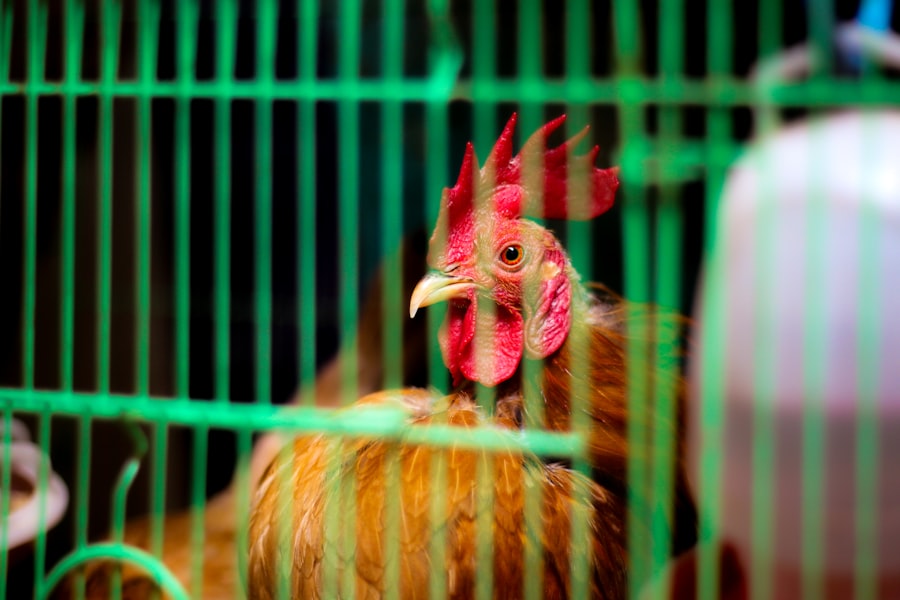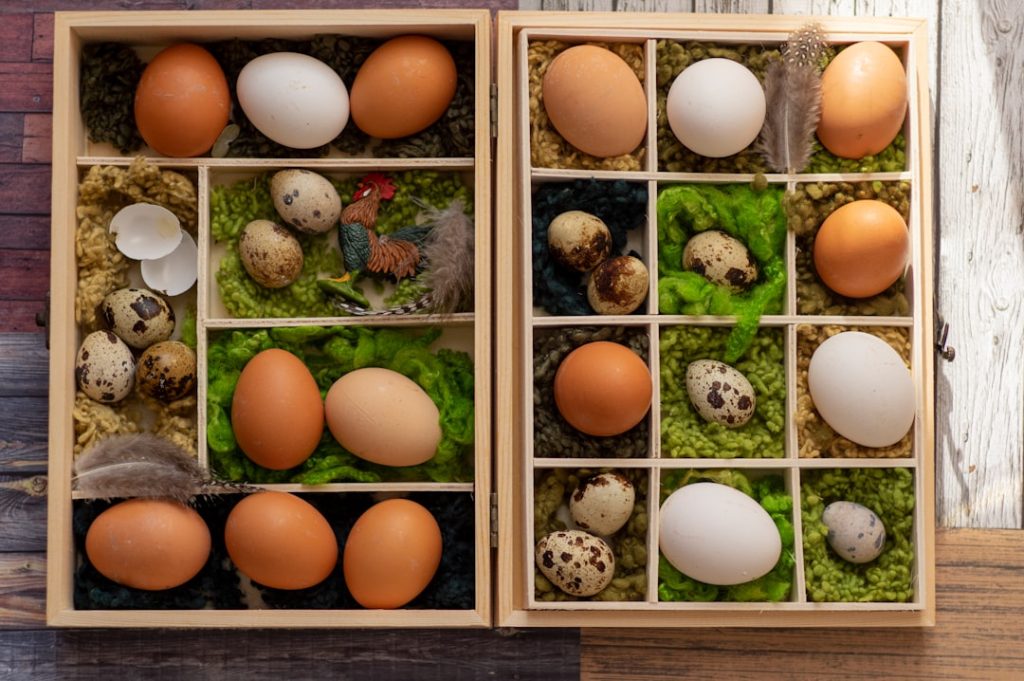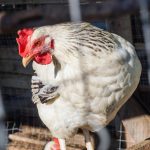When initiating a chicken farming operation, several initial costs must be considered. The primary expense is the purchase of chickens, with prices varying based on breed and age. Housing is another significant cost, ranging from simple DIY coops to more elaborate pre-built structures.
Essential equipment such as feeders, waterers, and heating lamps must also be factored into the budget. Fencing is necessary to protect chickens from predators. Feed and supplements constitute ongoing expenses.
The type and quantity of feed required depend on the number of chickens, their age, and breed. Supplements like calcium or grit may be necessary to ensure optimal nutrition. Healthcare and veterinary expenses are also crucial considerations.
This includes vaccinations, deworming, and other preventative measures to maintain flock health. Budgeting for these initial and ongoing costs is essential for a successful chicken farming venture. Proper planning helps ensure that all necessary resources are available and potential unexpected expenses are accounted for.
Table of Contents
Key Takeaways
- Initial costs for raising chickens include purchasing chicks, a heat lamp, feeder, waterer, and bedding.
- Housing and coop expenses involve building or purchasing a suitable shelter for the chickens, including nesting boxes and perches.
- Feed and supplements are ongoing expenses, including purchasing chicken feed, grit, and occasional supplements like oyster shells.
- Healthcare and veterinary expenses may include vaccinations, deworming, and occasional visits for sick or injured chickens.
- Bedding and maintenance costs include regular cleaning of the coop, replacing bedding, and maintaining the overall cleanliness of the chicken area.
- Egg incubation and hatching expenses involve purchasing an incubator, hatchery supplies, and potentially brooding equipment for the newly hatched chicks.
- Miscellaneous expenses can include items like predator-proofing the coop, purchasing chicken treats, and any unexpected costs that may arise during chicken raising.
Housing and Coop
Key Features of a Good Coop
A coop should provide adequate space for the chickens to roost, nest, and move around comfortably. It should also be well-ventilated and provide protection from predators and the elements. Additionally, the coop should be easy to clean and maintain to ensure the health and well-being of your flock.
Initial and Ongoing Costs
When considering the housing and coop for your chickens, it’s important to factor in the initial cost of purchasing or building the structure, as well as ongoing maintenance and repair costs.
Additional Expenses to Consider
In addition to the coop itself, you will also need to invest in feeders and waterers for your chickens. These should be durable and easy to clean to ensure that your chickens have access to clean food and water at all times. You may also want to consider investing in heating lamps or other heating sources for the coop, especially if you live in a colder climate. It’s important to factor in the cost of these additional items when planning your housing and coop expenses for chicken farming. Overall, investing in a well-designed and functional coop is essential for the health and well-being of your chickens, so it’s important to budget for these expenses accordingly.
Feed and Supplements
Feed and supplements are essential expenses when it comes to chicken farming. The type and quantity of feed will depend on the age, breed, and number of chickens you have. It’s important to provide a balanced diet for your chickens to ensure that they are healthy and productive.
This may include a combination of commercial feed, grains, and kitchen scraps, depending on your preferences and budget. Additionally, you may want to invest in supplements such as calcium or grit to ensure that your chickens are getting all the nutrients they need to stay healthy. It’s important to factor in the cost of feed and supplements when planning your expenses for chicken farming.
When it comes to feed and supplements, it’s important to consider ongoing costs as well as initial expenses. You will need to budget for regular purchases of feed and supplements to ensure that your chickens have access to the nutrition they need. Additionally, you may want to consider purchasing feeders and waterers that are durable and easy to clean to ensure that your chickens have access to clean food and water at all times.
It’s important to factor in these ongoing costs when planning your expenses for feed and supplements for chicken farming.
Healthcare and Veterinary Expenses
Healthcare and veterinary expenses are an important aspect of chicken farming that should not be overlooked. Just like any other animal, chickens require regular healthcare and preventative measures to ensure that they stay healthy. This may include vaccinations, deworming, and other preventative measures to protect your flock from diseases and parasites.
It’s important to factor in the cost of healthcare and veterinary expenses when planning your budget for chicken farming. In addition to preventative measures, it’s important to budget for unexpected veterinary expenses that may arise. Chickens can be prone to various health issues, so it’s important to be prepared for any unexpected medical costs that may arise.
This may include treatment for injuries or illnesses, as well as emergency veterinary care if needed. It’s important to factor in these potential expenses when planning your budget for healthcare and veterinary expenses for chicken farming.
Bedding and Maintenance
Bedding and maintenance are ongoing expenses that should be factored into your budget for chicken farming. The type of bedding you choose will depend on your preferences and budget, but it’s important to provide a clean and comfortable environment for your chickens. This may include materials such as straw, wood shavings, or sand, depending on what works best for your coop and climate.
Additionally, you will need to budget for regular cleaning and maintenance of the coop to ensure that it remains a healthy environment for your flock. In addition to bedding, you will also need to budget for regular maintenance of the coop itself. This may include repairs, replacements, or upgrades as needed to ensure that the coop remains secure and functional.
It’s important to factor in these ongoing costs when planning your budget for bedding and maintenance for chicken farming.
Egg Incubation and Hatching

Hatching your own chicks requires careful budgeting to ensure a successful and cost-effective experience.
Initial Investment
To get started, you’ll need to purchase an incubator, which can range in price depending on its size and features. Additionally, you’ll need to invest in essential supplies such as egg turners, thermometers, and other equipment to ensure successful hatching.
Ongoing Expenses
Beyond the initial investment, you’ll need to budget for ongoing expenses related to egg incubation and hatching. This includes the cost of electricity to run the incubator, as well as supplies such as bedding and feed for the newly hatched chicks.
Long-term Planning
It’s crucial to factor in both the initial and ongoing costs when planning your budget for egg incubation and hatching for chicken farming. By doing so, you’ll be better equipped to manage your expenses and ensure a profitable and sustainable chicken farming operation.
Miscellaneous Expenses
In addition to the main expenses outlined above, there are several miscellaneous expenses that should be factored into your budget for chicken farming. This may include items such as nesting boxes, perches, or other accessories for the coop. Additionally, you may want to invest in tools or equipment such as egg collection baskets or egg washers to make egg gathering and cleaning more efficient.
It’s important to factor in these miscellaneous expenses when planning your budget for chicken farming. Another miscellaneous expense to consider is the cost of transportation for your chickens or supplies. This may include fuel costs for trips to purchase feed or supplies, as well as any costs associated with transporting chickens if needed.
It’s important to factor in these miscellaneous expenses when planning your budget for chicken farming. In conclusion, starting a chicken farming venture requires careful planning and budgeting for a variety of initial and ongoing expenses. From housing and coop costs to feed, supplements, healthcare, bedding, egg incubation, and miscellaneous expenses, there are many factors to consider when planning your budget for chicken farming.
By carefully considering each of these expenses and factoring them into your budget, you can ensure that you are prepared for the financial aspects of running a successful chicken farm.
If you’re considering keeping chickens, you may also be interested in learning about different types of chicken coops. Poultry Wizard has a helpful article on farmhouse chicken coops that provides valuable information on the design and cost of building a coop for your feathered friends. Check it out here.
FAQs
What are the initial costs of keeping 4 chickens?
The initial costs of keeping 4 chickens include purchasing a coop, feeders, waterers, bedding, and the chickens themselves. These costs can vary depending on the quality and size of the items purchased.
What are the ongoing costs of keeping 4 chickens?
The ongoing costs of keeping 4 chickens include purchasing chicken feed, bedding, and any necessary medical care. Additionally, there may be costs associated with replacing or repairing coop equipment.
How much does chicken feed cost for 4 chickens?
The cost of chicken feed for 4 chickens can vary depending on the type of feed and the region, but on average, it can range from $15 to $30 per month.
What are the potential medical costs for 4 chickens?
The potential medical costs for 4 chickens can include vaccinations, deworming, and treatment for common ailments. These costs can vary, but it’s recommended to budget for around $50 to $100 per year for medical care.
Are there any other costs associated with keeping 4 chickens?
Other potential costs associated with keeping 4 chickens may include predator-proofing the coop and run, purchasing additional equipment such as heat lamps or nesting boxes, and any unexpected expenses that may arise.

Meet Walter, the feathered-friend fanatic of Florida! Nestled in the sunshine state, Walter struts through life with his feathered companions, clucking his way to happiness. With a coop that’s fancier than a five-star hotel, he’s the Don Juan of the chicken world. When he’s not teaching his hens to do the cha-cha, you’ll find him in a heated debate with his prized rooster, Sir Clucks-a-Lot. Walter’s poultry passion is no yolk; he’s the sunny-side-up guy you never knew you needed in your flock of friends!
Meet Walter, the feathered-friend fanatic of Florida! Nestled in the sunshine state, Walter struts through life with his feathered companions, clucking his way to happiness. With a coop that’s fancier than a five-star hotel, he’s the Don Juan of the chicken world. When he’s not teaching his hens to do the cha-cha, you’ll find him in a heated debate with his prized rooster, Sir Clucks-a-Lot. Walter’s poultry passion is no yolk; he’s the sunny-side-up guy you never knew you needed in your flock of friends!







